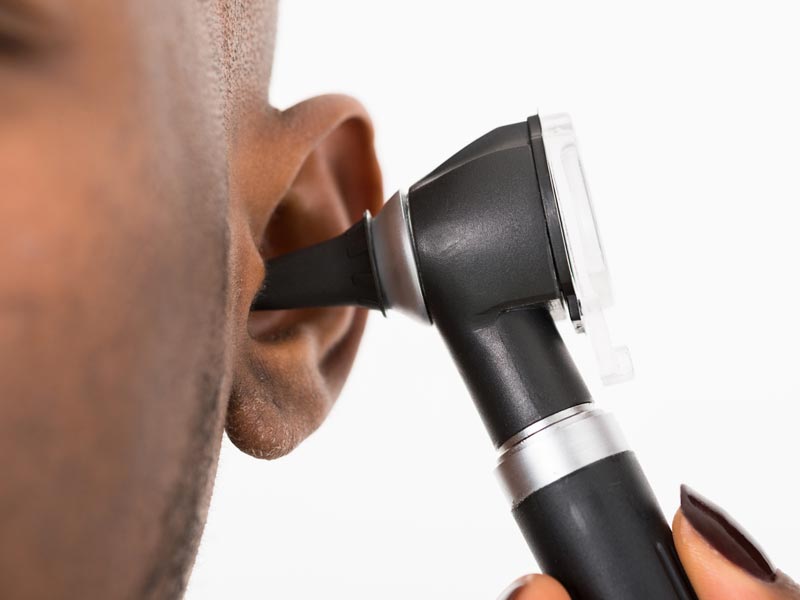Ear infections are one of the most common causes of medical visits worldwide. There are several types of “ear infections” representing the different anatomical parts of the ear. These include the outer or external ear (the ear canal), the middle ear (the space behind the eardrum), and the inner ear (the cochlea and vestibule).

What Are the Causes of Middle Ear Infections?
Inflammation of the middle ear (otitis media), usually caused by bacteria, may be the result of a viral upper respiratory infection which has caused a fluid buildup behind the eardrum, which may or may not become purulent (containing pus.). Anyone may develop otitis media, but it is more common in children than adults. The global incidence of middle ear infections is 10%, half of which occur in children less than 5 years of age. Five out of six children will have at least one middle ear infection by their third birthday.
The typical signs and symptoms of otitis media (OM) are fever, ear pain, ear drainage, hearing loss, dizziness, malaise, loss of appetite, and sleeping difficulties. Parents may report these symptoms as well as their child pulling on their ears and unexplained irritability.

What types of Bacterial Infections are found in the middle ear?
The most common bacterial causes of middle ear infections are:
-Streptococcus pneumoniae
-Haemophilus influenzae
-Moraxella catarrhalis
-Streptococcus pyogenes
-Staphylococcus aureus
Bacteria can form a "biofilm" on the middle ear lining that helps them resist both the body's defenses and antibiotic treatments. A biofilm is a bacterial colony attached to a surface. The elaborate matrix created by the bacteria protects them from the body's defense system. Bacteria deep within the biofilm can also enter a metabolic state that renders antibiotics ineffective.
These infections may result in suppurative complications such as mastoiditis, meningitis, and intracranial abscess in severe cases.
The Anatomy of the Ear
Why are children most commonly affected?
The eustachian tubes are smaller and more level in children than they are in adults. This makes it difficult for fluid to drain out of the middle ear. If the eustachian tubes are swollen or blocked with mucus or enlarged adenoids, fluid may not be able to drain. Complicating matters, the immune system of a child is less developed than an adult’s resulting in increased susceptibility to infection.
The adenoids, which are part of the immune system, respond to bacteria passing through the nose and mouth. The adenoids can trap the bacteria causing a chronic infection that can then pass into the eustachian tubes and extend into the middle ear.
Children in households with family members who smoke are at increased risk of middle ear infections. Even in cases where family members smoke outside these children often continue to have infections from exposure to secondhand smoke. Children in daycare also have an additional risk of increased middle ear infections. This is due to increased upper respiratory infections from exposure to large numbers of sick contacts.
What is the treatment for persistent or recurrent middle ear infections?
If antibiotics and preventative measures fail, placement of ear tubes also called pressure equalization tubes (PET's), permit middle ear ventilation through the ear canal using the tubes as a means to keep the eardrum open. Until the eustachian tube begins to function normally, it is necessary to provide air to the middle ear for normal middle ear pressure and function. In most cases, PET’s last approximately one to two years. As children age, the eustachian tube takes a more angled turn to the nasopharynx and the immune system matures enabling it to handle invading bacteria and viruses more efficiently. Occasionally additional tubes or adenoid removal may be necessary to help improve middle ear function to avoid complications and hearing loss.
What are the causes and treatment for external ear infections?
External ear infections (otitis externa) often referred to as swimmer’s ear, is an infection in the ear canal. Although it is more common during the swimming season, it can occur at any time of year and is not necessarily related to swimming. Excessive moisture in the ear canal can lead to growth of bacteria and fungus. Besides the buildup of moisture in the ear canal, otitis externa is frequently caused by trauma to the ear canal from self-cleaning with Q-tips. The condition is usually treated with antibiotic ear drops. In order for the antibiotic ear drops to be effective, the ear canal should be meticulously debrided of any wax, drainage, or fungal debris by your Ear Nose and Throat physician. Oral antibiotics are rarely needed unless the infection has spread beyond the ear canal.
If you or a family member are experiencing recurrent ear infections call Queen City Ear Nose and Throat at (704) 703-1080 or book an appointment online today.

